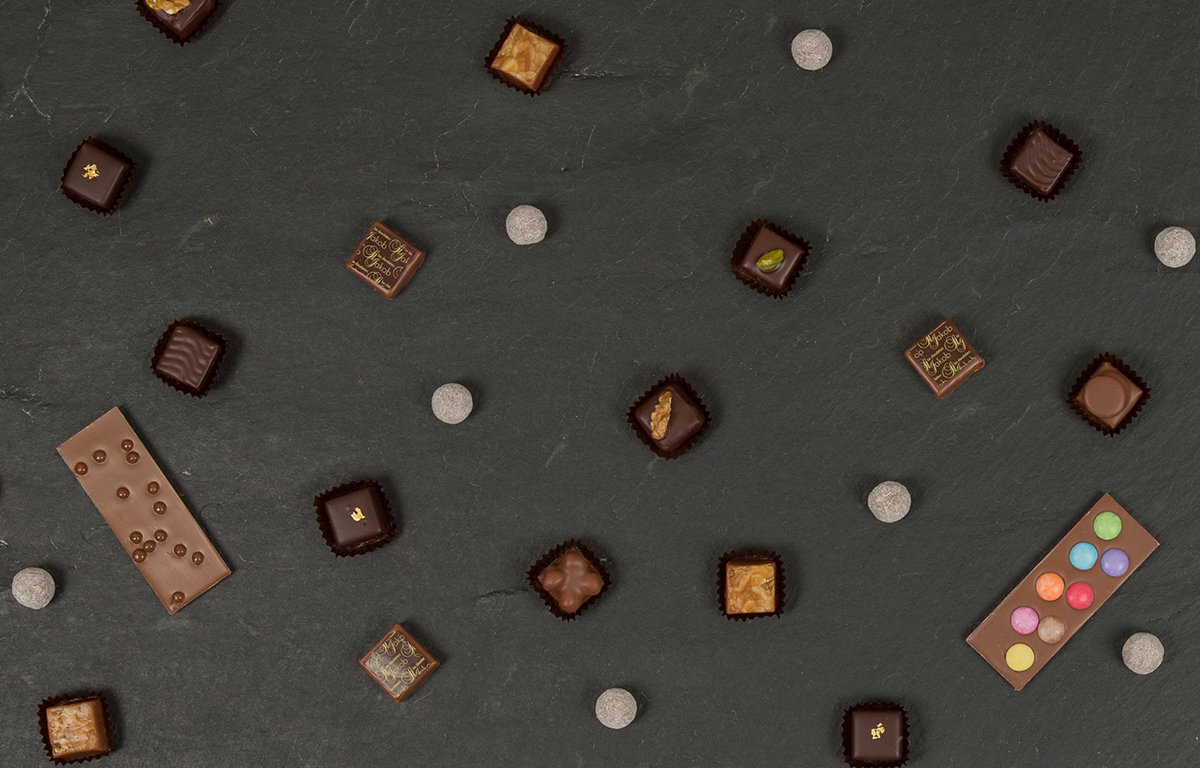How can a bean from the tropics be used to produce a product that has made Switzerland famous throughout the entire world? The history of chocolate.
Discovery of cocoa in Mexico
Let’s travel back to the age of great navigators, when the conquistadores set foot in Mexico and thus met the Aztec emperor “Moctezuma”. According to History Spaces, the emperor offered chocolate mousse jars or liquid of ground cocoa beans, chili pepper and water to the Spanish, led by Hernan Cortès, as a welcome gift. Even if the chocolate mousse in Aztec style did not resemble the one we know today, the Spanish loved it.
They then learnt from the indigenous people about the cocoa bean. From picking the pod (the fruit of the cocoa tree) to the inner beauty of the bean: the pulpit, which is white and very bitter. Once the pulpit is removed, the cocoa beans are uncovered. They are then roasted, peeled and crushed to obtain the cocoa paste. The Aztecs consumed the cocoa paste as it was, but for the Spanish it was unusually bitter so they felt the need to add some spices.

Discovery of chocolate in Europe
When they left, they took quite some beans and brought them back to Spain, where they were used as a trade currency. But the Spanish quickly discovered the tasty spiced and heated version of the cocoa rather than using it as a currency. The decision was quickly made: this delicious and delicate product has to be exported! In the 16th century, royal families and aristocrats in Europe enjoyed the exotic and trendy drink of the moment: cocoa powder mixed with hot milk, honey and spices.
Discovery of chocolate in Switzerland
In 1679, Mr. Henri Escher, Mayor of Zurich, was invited to Brussels and tasted this strange drink called “hot chocolate” that all high society seemed to appreciate for the first time. Apparently, he liked it very much as he brought the recipe back to Switzerland with the secret ambition of competing with the Belgians.
But in Zurich, Mayor or not, you don’t decide everything after all. Even less so when it comes to a supposedly aphrodisiac drink! The Protestant city of Zurich strictly prohibited the consumption of this drink with its sulfurous reputation. But Bern, on the other hand, heared of the trendy drink and opened the first hot chocolate shop in 1792. And here you go: Zurich can’t decide everything.
The delicious aroma of hot chocolate spread throughout Switzerland in no time. Swiss confectioners turned to the Italians to learn the craft of cioccolatieri. This was the case of a certain Jean-François Cailler, who learned everything in Turin. One of his creations may be hiding in a cupboard in your kitchen.
But why train with these dear Italians, you want to know? Don’t forget that we owe quite some sweet dishes to the Italians like Ferrero Rocher, Mon Chéri and the entire Kinder range. So we’re dealing with professionals in chocolate delicacies here.
Swiss creativity at the service of chocolate
In the beginning of the 20th century, Switzerland controlled half of the world’s chocolate export market thanks to a revolutionary product: milk chocolate. We owe this invention to two friends: Daniel Peter, candle maker and husband of Fanny Cailler (the world is small), and a certain Henri Nestlé, slowly recovering from financial difficulties (who would have thought so!).
Swiss master chocolate makers enjoy a reputation as innovators and entrepreneurs. Yes, there were inventions! The most famous are the roller mill in 1826 by a certain Philippe Suchard, confectioner and creator of Suchard chocolate and more surprising, Sugus (they are registered in the Swiss culinary heritage since 2008!). In 1830, Charles-Amédée Kholerhad had the delicious idea to add hazelnuts to the chocolate. At his chocolate factory, there was an apprentice named Rodolphe Lindt. Once his training was finished, Rodolphe invented the mixing machine that makes it possible to make dark chocolate called “surfin”.

Chocolate these days
Today, this very small country of ours has 16 companies in the chocolate industry. They employ 4,400 people and have a turnover of 1.69 billion Swiss francs on the Swiss market alone (which proves that being known for banks and chocolate is closely linked…).
The other half of the sales are made abroad. The Swiss are the world champions in chocolate consumption with 12 kg per year and capita! But chocolate is not bad for your health if it is eaten sparingly. On VeryWellFit, we found the result of several researches about it. It contains polyphenols, which are antioxidants that reduce cell aging, cancer risk and cardiovascular disease. It is also rich in magnesium, hence the antidepressant properties attributed to it.
So, fancy some chocolate? Since it was the Spanish who brought cocoa to Europe, I propose a recipe for a typical Spanish breakfast: Los Churros con Chocolate! The site is in Spanish but with the video, it’s very simple, all the steps are detailed. I’ll still translate the ingredients for you:
1) Chocolate
For 2 people:
- 175g of chocolate
- 500 ml of milk or vegan alternative
- ½ tsp of cinnamon powder
- 1 pinch of black pepper
- 1 tbsp of corn starch
Pour all ingredients into a bowl.
Is the chocolate very thick? Congratulations, it’s a success!
2) Churros
For 10-12 pieces:
- 250g of wheat flour
- 250ml water
- ½ tsp of salt
- 1 tbsp of olive oil
- ½ tsp of yeast
Fry in olive oil and sprinkle with sugar at the end.
Dip the churros in the chocolate bowl and enjoy!
And to conclude, it seemed unthinkable to me not to offer you a Swiss chocolate recipe! The real Swiss hot chocolate is a delight! To warm you up when the weather cools down I strongly recommend homemade hot chocolate! A good movie or a book, a blanket and a hot chocolate, what more could you ask for?












What do you think?